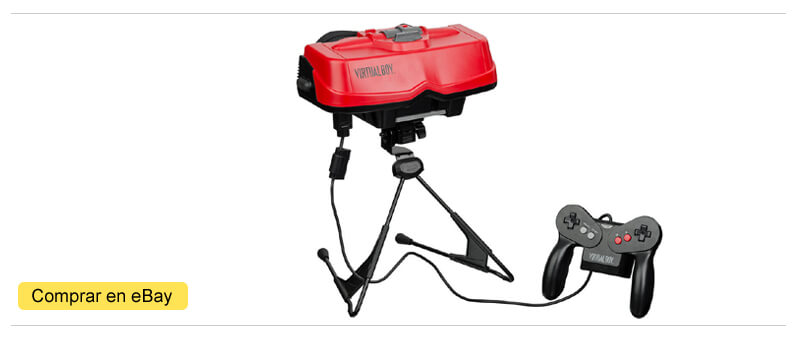We are facing one of the most important consoles of the 90’s, Nintendo’s Virtual Boy, the successor to the Super Nintendo and Game Boy, Nintendo’s first 32-bit console, the console that brought virtual reality to our lives for the first time. humble homes, the one that explored the concept of portable, Gunpei Yokoi’s latest console at Nintendo, Nintendo’s retro video game console par excellence…
The Virtual Boy was the console that set Nintendo and the entire video game industry in the path they should NOT follow, but it did it in the best possible way, taking a chance with the most amazing console of all time in relation to its time of release. … After all, we are talking about virtual reality in the 90’s. Let’s get to know the exciting history of Virtual Boy, Nintendo’s 32-bit!
| COMPANY: | Nintendo |
| CONSOLE GENERATION: | 5TH GENERATION OF CONSOLES |
| RELEASE DATE: | 1995 Japan, 1995 North America. |
| GAMES CATALOGUE: | 22 video games, 8 of them exclusive to Japan |
| SOLD UNITS: | Approximately 770,000 units worldwide |
| LAUNCH PRICE: | 15,000 yen upon release in Japan. US$179.95 in the United States |
| PROCESSOR: | NEC V810 Custom 32-bit 20 MHz RISC. |
| FORMAT: | Cartridge |
| BUY IT ON EBAY: | https://ebay.us/Pw5fW8 |
- History of the Virtual Boy
- Price of a Virtual Boy console. How much?
- Collect the Virtual Boy.
- Buy a Virtual Boy.
- TOP Retro: Best Virtual Boy games.
- FAQ Virtual Boy.
- Technical characteristics of the Virtual Boy.
Virtual Boy, Nintendo’s virtual reality
The Virtual Boy is the 32-bit console with which Nintendo wanted to amaze the world with the arrival of virtual reality in our homes, something that in the mid-90s was like having a ninja father and a Terminator uncle from the future. with a console under the arm, so that we understand each other. The one that was going to be the successor to the Game Boy, taking a giant technological leap, also had a great added responsibility: Being the representative of Nintendo in the 32-bit Era, that is, facing Sega and Sony until their Project Reality (Nintendo 64) was ready.
Virtual Boy Background
The development of the Virtual Boy began in the early 90s when the North American company Reflection Technologies presented its technology to Nintendo, the “RTI Mirror-scanning Leds”, which was acquired in 1992 by Nintendo exclusively for the whole world. The development of this technology in video games and its inclusion in a new console was entrusted to the R&D1 development team, led by the creator of the Game&Watch and the Game Boy portable console, the master Gunpei Yokoi.
We are talking about the early and mid-90s, the 16-bit era, one of the most remembered and important times in the history of video games, in which the rivalry between video game companies was maximum and each step was closely watched by the public and the press. Nintendo was the undisputed leader in the handheld market with its Game Boy, but when it came to home consoles, a brutal battle was raging outside of Japan between the Super Nintendo and the Mega Drive.
Everything indicated that the 16 bits would be in a technical tie in Europe and North America (two large markets), so the companies rushed to develop and announce what would be the successors to their consoles, with the aim of making a difference with their new 32-bit machines in a new generation. A multitude of companies took advantage of this moment to gradually enter the fray with new machines such as the 3DO, Atari Jaguar or Amiga CD32, but the star appearance would be that of Sony and its new machine, the PlayStation.
The Sega Saturn and the Sony PlayStation were consoles with a clear concept: Powerful desktop consoles, focused on polygonal graphics with the CD format, what people demanded. Nintendo, for its part, was developing its Project Reality (1993) together with Silicon Graphics, Inc., which promised to be quite a revolution, but with the problem of time against it, Nintendo was late for the fifth generation of consoles and was running the risk that Sega and Sony dominate the market. The VR-32 project should be released ahead of schedule to avoid leaking to the competition.
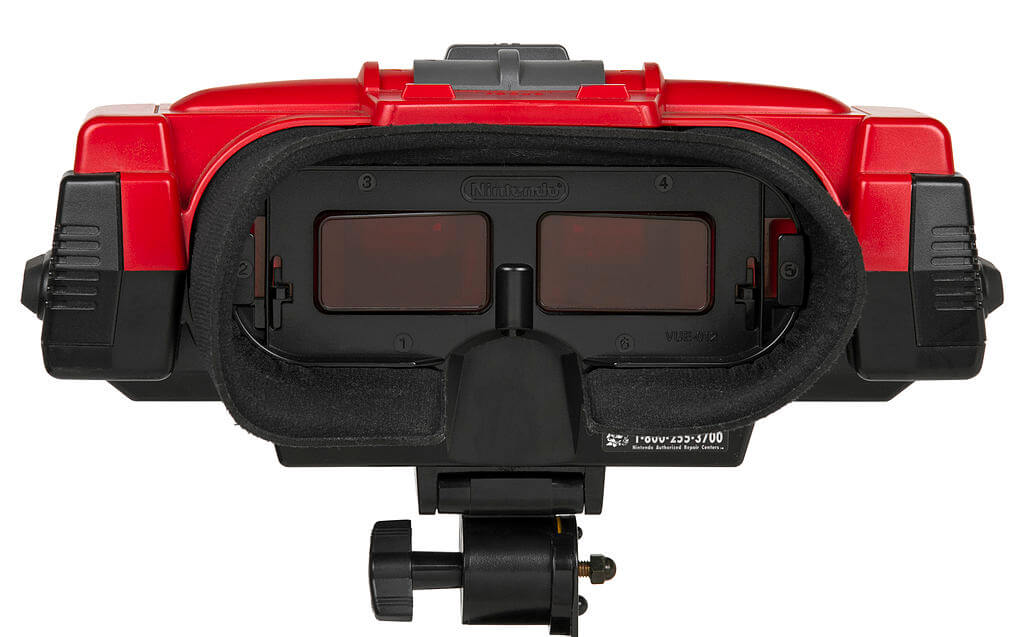
Gunpei Yokoi’s VirtualBoy
The task entrusted to the inventor of the Game Boy and his development team was daunting: Contemplating the VR32 project initially as portable virtual reality headsets (a new license), Nintendo’s sales department focused on the console as the successor to the successful gameboy. As if this were not enough, Nintendo was also now ordering it to also cover the flank of desktop consoles, which in practice meant being the successor to the Super Nintendo.
For a machine to become the successor to two markets as disparate as desktop and laptop at the same time, is something that only the Nintendo Switch would achieve many years later, at a time when graphics did not have such an outstanding value and determining as they were given in the 90 ‘. In the case of the Virtual Boy, a single console had to cover two fronts in years in which the public demanded raw power and technological innovation for the new generation of video game consoles. Tremendous challenge for our adventurer Gunpei Yokoi!
But Gunpei Yokoi had something very different in mind for his virtual reality console: True to the principles that had made him one of the most important figures in the video game industry, a portable console had to be economically priced to get the most out of it. public, low battery consumption for long gaming sessions and technical performance inevitably consistent (and conditioned) with the previous points.
Gunpei Yokoi normally followed the “Kareta Gijutsu no Suihei Shikō” philosophy in their creations, which we could conceptually translate as using already mature and cheap technologies with great creativity, thus obtaining innovative and balanced results. Unfortunately for him, the VR-32 project was a new 32-bit device and cutting edge technology. He’d hardly find his footing on a new 32-bit handheld VR console in the early/mid 90’s… But he tried.
One of the first decisions was to remove the movement sensors, thus avoiding dizziness due to sight and image desynchronization and lowering the cost. The direct consequence was that the console could already be on a base, the weight automatically ceased to be a problem and from a portable VR headset, we went to a portable VR console. NEC’s inexpensive 20 MHz 32-bit V810 CPU was geared for 2D, falling far short of the raw polygon and texture processing power of the PlayStation or Saturn.
Regarding the screens, including color would have greatly increased the final price of the product and the duration of the batteries (6 AA batteries), so it was decided to use a single color, four shades of red on a black background, a form very similar to the system used in the original Game Boy. In addition to lowering the cost of production, red was the color that had the greatest contrast with black and the lowest consumption, hence the decision for one of the most criticized aspects of the Virtual Boy.
Gunpei had created a new line of consoles far from portable and powerful desktop consoles, the Virtual Boy was a new license designed to amaze and amuse based on a physical gaming experience. The technical features of the games, passed into the background and their success depended on the creativity of the programmers, with the possibility of using vectors for games that required 3D worlds. A very similar concept to the Wii.
Unfortunately for Nintendo and Gunpei Yokoi, the player base in those years was not yet mature enough to prioritize other aspects above technical performance and polygonal graphics, and to tell the truth, the graphics achieved in those years on home systems, They had not yet reached an acceptable minimum to function with ease in any genre and stop being our priority.

Launch and failure of the VirtualBoy
Nintendo accelerated the launch of the VR-32 project by definitively calling it Virtual Boy. The new VR machine was launched on July 21, 1995 for 15,000 yen in Japan and on August 16, 1995 in the United States for US$179.95, the console would never reach Europe… The FAILURE was tremendous, in Japan they were sold about 150,000 units while in the United States the figure rose to 500,000 units sold. Some ridiculous numbers to be a Nintendo console.
On March 22, 1996, what would be the last commercial Virtual Boy video game in North America was published, 3D Tetris completed a catalog of 22 video games. The console had already been reduced in the USA to 90 dollars and the specialized stores would end up getting rid of the Virtual Boy and its cumbersome box for 50 dollars or less. Despite launching a huge advertising campaign in the United States, based on physical testing at multiple locations and rentals of the console at Blockbusters across the country, the Virtual Boy was doomed to fail.
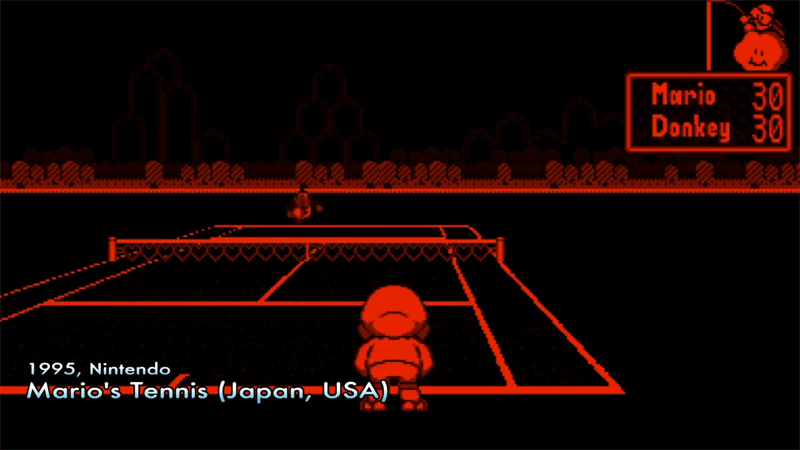
Why did the Virtual Boy fail?
- There were no good pitching games. Only 5 games and not a “Super Mario World” or any selling consoles. Hiroshi Yamauchi (President of Nintendo) had distributed very few development kits to ensure quality standards. He evidently missed.
- Having no processors dedicated to processing polygon graphics, the console was a 2D system in the Era of polygon graphics.
- In practice, the machine had to play the games on 2 screens, with the corresponding consumption of resources.
- By the press and by its own name, players expected a successor to the Game Boy, a portable console. Something that was not at all. Expectations were very different from reality.
- The Virtual Boy gave many children headaches. Surely this was due to a bad calibration, but the public image of the machine was seriously affected.
- Nintendo admitted that the console could damage the eyesight of children under 7 years of age. This data turned out to be an anti-sales bomb.
- The hardware did not force any correspondence between the two screens, with the possibility of lag that could cause nausea if the programmers had not done their job well.
- The game posture was disastrous, sitting with the neck hunched over time caused neck and back pain in many cases (something much more common in elderly people).
- The nature of the Virtual Boy was profoundly antisocial, all of its games being single player.
- Only the player could see the screen. Friends and family were completely relegated.
- The impossibility of publicizing the greatest advantage of the Virtual Boy, its 3D effect, meant that the vast majority of the public could not see what the console games were like. In the ads you didn’t see what their games were like.
- A large part of the players had already planned to buy or acquired the Sega Saturn or PlayStation, consoles that dazzled with their capabilities. The Virtual Boy was late and bad.
Within Nintendo Gunpei Yokoi was declared in practice guilty of Nintendo’s biggest fiasco since the 80’s. Her reputation fell from the top and taking what happened as a personal affront, she left Nintendo in 1996 forming her own studio: Koto Laboratory, which would develop the WonderSwan portable console, now under all the guidelines of the master Gunpei.
The Virtual Boy was a new console that had the bad luck of not being understood, even by the managers of his own company. In the words of Miyamoto, who was involved in the Ultra 64 project in those years, if it had been released as an electronic toy or a new console license, its future would have been very different, taking time for developers to learn how to exploit the machine. with all its possibilities.
But business needs took precedence, and the Virtual Boy was promoted and sold as the successor to the Game Boy and a next-generation 32-bit machine. Nintendo deceived its users without them being deceived. In barely 2 years, Nintendo withdrew support for the virtual reality console, stopped manufacturing it and focused all its efforts on the future Nintendo 64. We Europeans couldn’t even try it and many of us were left wondering how far it could have gone. this console with enough support from the developers.
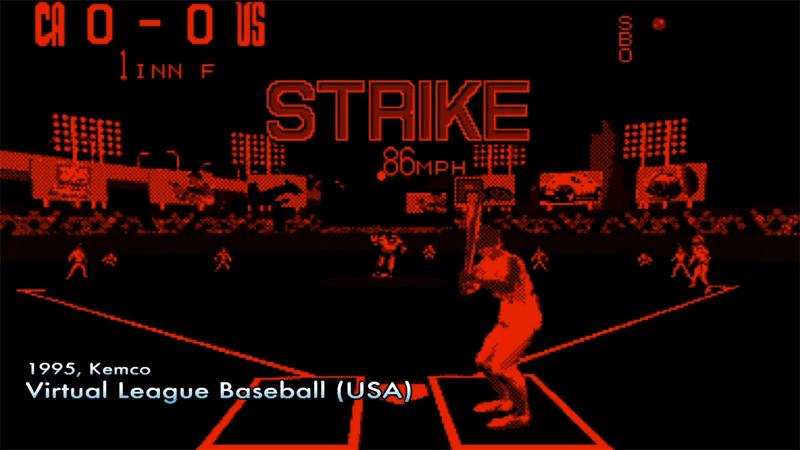
The gaming experience with the Virtual Boy
Nintendo has always insisted on the potential of 3D as a differential factor and evolution in video games. Whether it was with the Famicom 3D glasses, with their FX Chip, or with the 3D glasses on the 3DS handheld console, Nintendo has often tried to consolidate 3D, which we have only accepted when they did not involve mere decoration or extra effort. To Nintendo’s sadness, not even its Nintendo 3DS seduced the bulk of users, its main feature being withdrawn in later versions of the portable, the 2DS and Nintendo Switch.
But to be fair to the Virtual Boy, to be able to correctly assess this peculiar retro console, it is essential to have it in our possession and to have enjoyed it, so here you have it from the point of view of a console collector and a fan of retro things: How is the experience of playing Virtual Boy today.
For this occasion, I am going to leave an extract from Infoconsolas from 2005, from what was my first real experience with the Virtual Boy. I think without a doubt that it is the most accurate way to convey to you everything that is felt when you are in front of a Virtual Boy for the first time. Years have passed, it’s true, but it doesn’t matter: The emotions and sensations are exactly the same… The only difference is that now a Virtual Boy costs three times as much:
"The truth is that when we acquired our two Virtual Boy units back in 2005, we were left with a somewhat bittersweet taste in our mouths:
10 years after the launch of Nintendo's Virtual Boy, we discovered a totally different console, a new concept, totally unknown 32 Bits… we placed the tripod for the glasses and saw how it adhered perfectly to the table, we connected the remote to the console and once in our hands we are surprised to see the controller that has surely served as inspiration for consoles that came out much later (you can give your own opinion), it was quite impressive to see how the console can work with batteries, which go in the controller, something we simply weren't used to… and it's time to insert the cartridge, which have a great physical resemblance to those of the Game Boy.
When resting the head on the glasses we feel how the rubber of the glasses does not bother at all, what is more, it adapts perfectly to the head, and at that moment we press ON (on the same command), the first thing that comes out in a static Virtual Boy presentation to gauge depth and axis, a second later we see with our own eyes games that very few people have been lucky enough to play in Europe: Mario's Tennis, with Mario at the helm and all his teammates was the first, Mario Clash, a 3D version of the mythical Mario Bros from the pipes was the second, then we were able to box and even play baseball, with all of them the depth experience, 3D was INCREDIBLE, something new, never seen in a home console, especially Mario's Tennis. What they promised was true.
The graphics were up to the task, really fluid movement and good gameplay left us glued to the Virtual Boy, with its stereo sound it really made us feel like we were in the game… The 2 Marios were the winners, without a doubt , and the feeling of playing a little-known console from a company as popular as Nintendo did nothing but improve the feeling of the game, playing a 3D version of the popular Mario Bros is not something that is done every days, and more when it is fully updated…
Honestly, this is how we felt in the first hours of the game, they were really "sweet" moments, after these hours of frenzy we began to see the console in a more objective way: The games, even acknowledging that they were the first (they were only made about 22) had a fairly simple structure, the graphics were halfway between 16 Bits and 32 Bits and what we disliked the most was the time (a few minutes), in which your eyes have to get used to the console, there were several dizziness in the first games. This was the sour touch of the gaming experience.
Likewise, the Virtual Boy left us as a whole with a good taste in our mouths, and even more so now that it is a collector's console. We understand why it did not succeed but this console is like wine, over the years it has only improved, the contrast of the 90's technology, virtual reality, Nintendo and the advances of our days to be able to compare, make that we cannot miss a console that was undoubtedly ahead of its time, since in 2005 we still did not have a domestic virtual reality system at an affordable price. We really would have loved if Nintendo had been more supportive of this console and given time to the programmers to learn how to use it 100%, in our opinion we don't believe that more than 25 or 30% of the real capacity of the console has been used."
This was my first gaming experience with the Virtual Boy many years ago in the company of my father and my brother, moments that many years later I remember as a wonderful time sharing a hobby that unites the three of us, collecting consoles and retro video games. Returning to the gaming experience, everything written here is totally valid today, if you are a collector of retro consoles and you know how to value this machine, the Virtual Boy will not disappoint you.
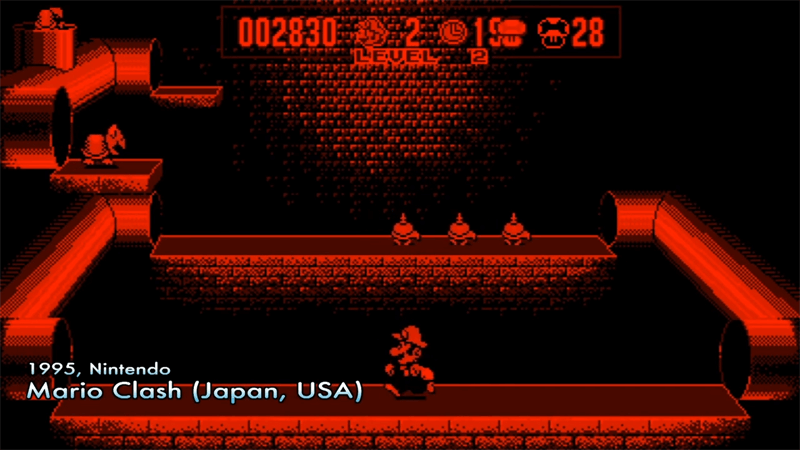
The price of the Virtual Boy console
At Infoconsolas we always like to offer you a comparison of prices and years of different systems, so that you can get a real idea of what it meant to buy a Virtual Boy at the time. Not having been released in Europe or South America, here is the price of the Virtual Boy in yen, how much the Virtual Boy cost at its launch, and the comparison with other contemporary systems:
| PC Engine Duo R | 1993 | 39,800 yenes | NEC |
| Fujitsu FM TOWNS Marty | 1993 | 98.000 yenes | FUJITSU |
| Pioneer LaserActive | 1993 | 89,800 yenes | PIONEER |
| NEC LaserActive | 1993 | 89,800 yenes | NEC |
| Panasonic 3DO | 1993 | 54.800 yenes | PANASONIC |
| Atari Jaguar | 1993 | 30.000 yenes | ATARI |
| PC Engine Duo RX | 1994 | 29,800 yenes | NEC |
| Neo Geo CD | 1994 | 49,800 yenes | SNK |
| Bandai Playdia | 1994 | 24.800 yenes | BANDAI |
| SNK Neo Geo CD | 1994 | 49,800 yenes | SNK |
| SEGA Saturn | 1994 | 44.800 yenes | SEGA |
| SONY PlayStation | 1994 | 39.800 yenes | SONY |
| PC FX | 1994 | 49.800 yenes | NEC |
| VIRTUAL BOY | 1995 | 15.000 yenes | NINTENDO |
| NINTENDO 64 | 1996 | 25.000 yenes | NINTENDO |
As you can see, the price of the Virtual Boy was very cheap for the time compared to the rest of the consoles, however, as we have already seen, the VB could not really be compared with any other home or desktop console. Despite having the lowest price on the market, the console was a sales flop and the cake was taken by the Saturn and the PSX.
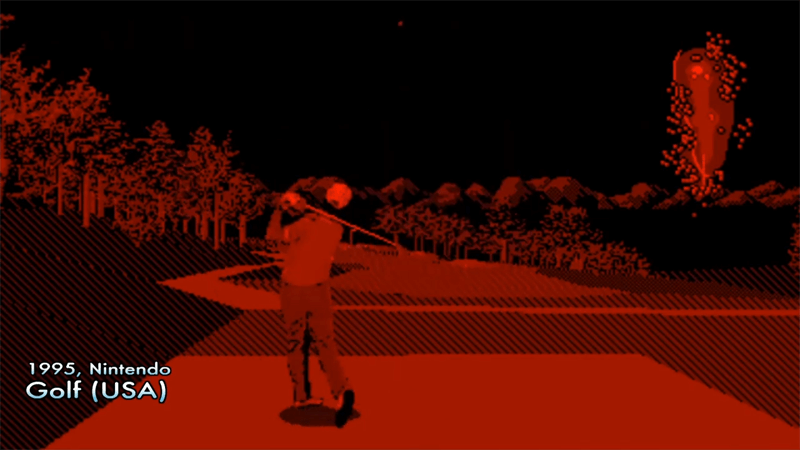
Collecting the Nintendo Virtual Boy
Is the Virtual Boy worth collecting? Yes, without a doubt. The Virtual Boy is a machine from another era, a new path that was created in the video game industry, and was closed for many years. An authentic museum piece that deserves to be in the collection of the best collectors of retro consoles and video games. Yes, really, the Virtual Boy is totally worth it.
And after so much emphasis in the previous paragraph, we will have to give some reasons:
- It is Nintendo’s only non-portable 32-bit console.
- The missing link between the Super Nintendo and the Nintendo 64.
- The latest Gunpei Yokoi machine on Nintendo.
- One of Nintendo’s biggest flops.
- It’s a virtual reality headset.
- The commands of him were the prelude to the new commands.
- Is beautiful.
- We were never able to enjoy it outside of Japan or North America.
- It is HISTORY of VIDEO GAMES. With capital letters.
Buy a VirtualBoy
Is it worth buying a Virtual Boy? Yes, obviously yes, as long as you are clear that its value is more as a collector’s item than as a playable console today. The Virtual Boy is today a wonderful console that transports us to a bygone era to show us what could have been and was not, the path that the industry could have taken and did not resume until more than 20 years later. A whole bet that unfortunately for Nintendo, turned out fatally.
How much does a Virtual Boy currently cost? Honestly, therein lies the problem, at the moment the Virtual Boy costs more than a Neo Geo AES, so you can get an idea of the price… The Virtual Boy is expensive, very expensive. In order to see how much the Virtual Boy costs and what price it currently has, here is a link to eBay where you can see a completely updated price list for the 32-bit Nintendo console.
As we always recommend from Infoconsolas, before attacking a console like this it is convenient to do a market study, know the average price of the consoles according to their state and once we are clear about this, start to follow up on eBay, preferably on the consoles that appear in “Buy It Now”, since auctions have long since ceased to be cheap. Good luck and good hunting!
STOP COLLECTOR! If you’ve seen the console listing on eBay, I want to say THANK YOU. Since 2004, the objective of Infoconsolas is to contribute to preserving the history of consoles and video games through our own collection of systems and the hours of work invested in this very website.
Being an eBay partner listing, if you buy a game or console, you will be helping Infoconsolas in the preservation of video game culture, so thank you very much again!
TOP: Best Virtual Boy console games
The Virtual Boy only had 22 commercial video games, so for this occasion we are going to leave you with a video in which all of its video games appear. Think that when you see what an emulation really is on a monitor, you can only get an idea of what their games were like, but you miss the most important aspect, their 3D.
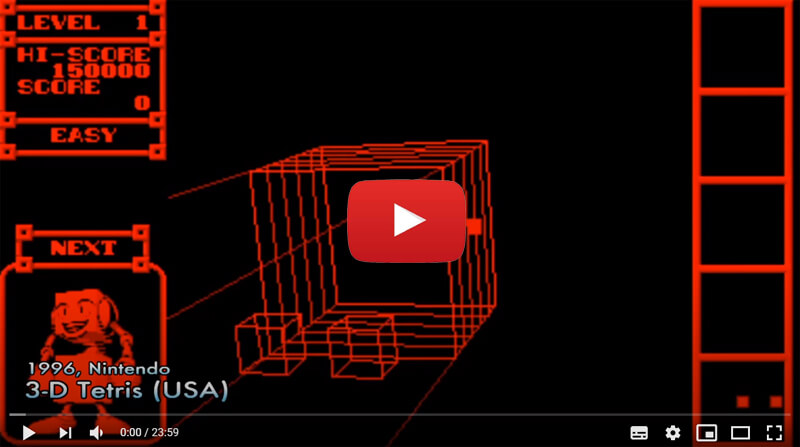
Nintendo Virtual Boy FAQ
Here you have the most frequent curiosities, questions and answers about the Virtual Boy console, one of the consoles with the most history, we hope you find it useful!
22 video games, 8 of them exclusive to Japan.
Yes, despite there being exclusivities you can exchange cartridges from different regions.
To the fifth generation of video game consoles.
July 21, 1995 in Japan and August 14, 1995 in the United States.
15,000 yen upon release in Japan. US$179.95 in the United States.
Cartridges.
To reduce costs and battery, in line with the work of the master Gunpei Yokoi.
VR32. Many of us liked it better.
Sí, se lanzó en 1995.
Not really, like many Japanese exclusives, it was also sold to trading partners like South Korea and Hong Kong.
Approximately 770,000 units worldwide.
No, it is a portable console, since by including batteries and screen, we can play anywhere, but we must fix it to a surface just like we do with a desktop console.
Yes, the NEC V810, albeit custom in this case.
Gunpei Yokoi.
Technical characteristics of the Virtual Boy portable console
Here you have the technical characteristics of the Virtual Boy:
- CPU: RISC NEC V810 custom 32-bit 20 MHz.
- RAM memory: 1MB.
- SRAM memory: 512KB.
- Screen: monochrome with 4 shades of red.
- Definition: 384 x 224 pixels, the screen brightness is adjustable.
- Sound: 16-bit 5-channel stereo plus 1 channel of noise.
- Controller: 6 buttons (A button, B button, HOME button, SELECT button, L button, R button), 2 D-pads and power button.
- Communication port: Exists, but is not used.
- Power supply: 6 AA batteries integrated in the remote control, with the possibility of connecting a power adapter.
External sources and links
- Famitsu Magazine
- Console graphic resources:
- https://commons.wikimedia.org/wiki/User:Evan-Amos


